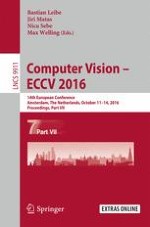2016 | OriginalPaper | Buchkapitel
SurfCut: Free-Boundary Surface Extraction
verfasst von : Marei Algarni, Ganesh Sundaramoorthi
Erschienen in: Computer Vision – ECCV 2016
Aktivieren Sie unsere intelligente Suche, um passende Fachinhalte oder Patente zu finden.
Wählen Sie Textabschnitte aus um mit Künstlicher Intelligenz passenden Patente zu finden. powered by
Markieren Sie Textabschnitte, um KI-gestützt weitere passende Inhalte zu finden. powered by
